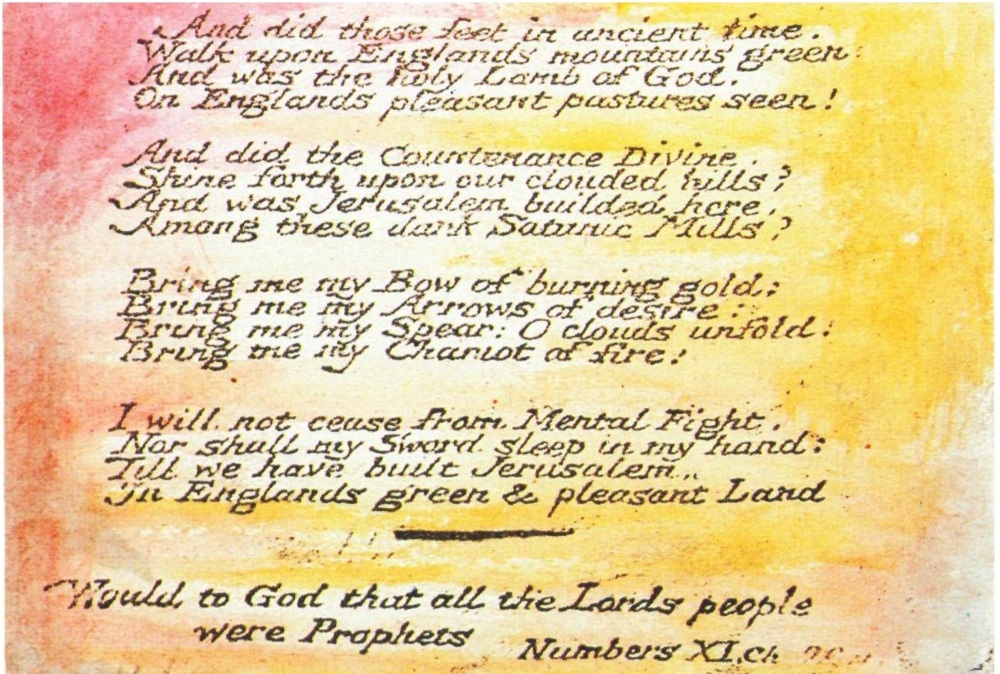And Did Those Feet In Ancient Time
And Did Those Feet In Ancient Time Lyrics
Walk upon England's mountains green?
And was the holy Lamb of God
On England's pleasant pastures seen?
And did the Countenance Divine
Shine forth upon our clouded hills?
And was Jerusalem builded here
Among these dark satanic mills?
Bring me my bow of burning gold!
Bring me my arrows of desire!
Bring me my spear! O clouds, unfold!
Bring me my chariot of fire!
I will not cease from mental fight,
Nor shall my sword sleep in my hand
Till we have built Jerusalem
In England's green and pleasant land.
About
“And did those feet in ancient time” is a short poem by William Blake from the preface to his epic Milton: a Poem, which was printed in 1808. Today, the poem is best known as the stirring anthem ‘Jerusalem’, with music written by Sir Hubert Parry in 1916 (check it out in the audio above). The anthem is both a hymn and an unoffical British national anthem. It has been a part of popular culture for over a century and has been used in television, film, and the Royal Wedding. Many of the lines have passed into popular idiom, such a “green and pleasant land” and “dark satanic mills”.
Blake wrote another work called Jerusalem: The Emanation of the Giant Albion, with which this work should not be confused.

(Part of the plate of the preface to Milton a poem, where the poem appears. This is Blake’s own illuminated copy.)
The poem was inspired by the apocryphal story that a young Jesus, accompanied by Joseph of Arimathea, a tin merchant, travelled to what is now England and visited Glastonbury during his unknown years. The legend is linked to an idea in the Book Of Revelation (3:12 and 21:2) describing a Second Coming, wherein Jesus establishes a New Jerusalem. The Christian church in general, and the English Church in particular, has long used Jerusalem as a metaphor for Heaven, a place of universal love and peace.
Structure
The poem comprises four quatrains, that is four-lined stanzas. The metrical rhythm is iambic tetrameter, giving a solid, determined tread, appropriate to the solemnity of the subject. Note that a iamb or metrical foot is one unstressed followed by one stressed syllable.
The rhyme scheme is regular ABCB pattern, all rhymes perfect,though the third stanza is ABAB. This adds to the determined mood.
Language and Imagery
The voice is that of the poet in the first person singular ‘I’, though in the last two lines this becomes ‘we’, suggesting national cohesion. Much of the language is symbolic, starting with ‘those feet’, a synecdoche for Jesus Christ. ‘Jerusalem’ is a commonly understood metaphor for heaven on earth, God’s presence not only in the Holy Land, but here in England. ‘Chariot of fire’ is a famous and frequently used metaphor for personal striving and challenge, used even as a film title. The detailed annotations give fuller information.
Q&A
Find answers to frequently asked questions about the song and explore its deeper meaning
- 1.And Did Those Feet In Ancient Time